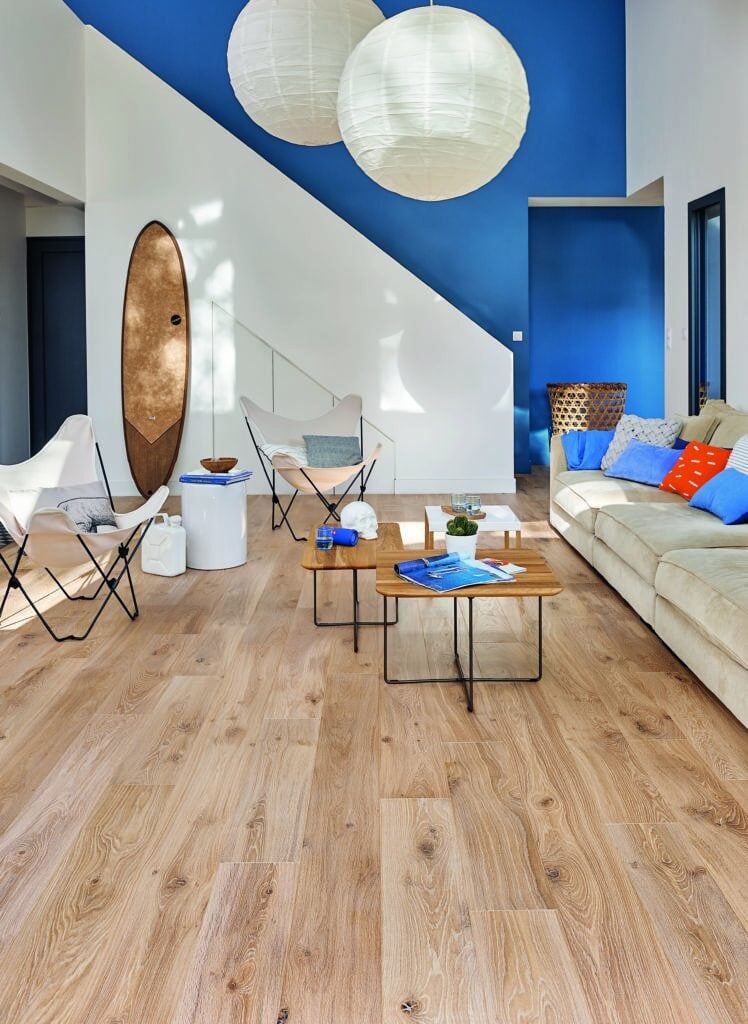Understanding Provenance — Why the Origin of Your Floor Matters

Not all wood floors are created equal, and few homeowners realize just how important the product’s origin is. Among the most vital tips for buying wood flooring is verifying where the material is made. Just as haute couture requires the ateliers of Paris or Milan, a true European Oak floor must be sourced from its namesake region. Many so-called European floors on the market are imitations, often produced in factories abroad using different species like Chinese Oak, which lacks the refined grain structure, consistent hue, and artisanal finish of true French oak. Seek out certifications and ask for documentation of origin. A floor crafted in Europe or the United States—particularly by mills with generational expertise—ensures not only beauty but technical integrity, durability, and a surface that ages with timeless grace.
Grade Isn’t About Quality—It’s About Character


One of the most misunderstood tips for buying wood flooring involves grading. Many clients wrongly equate ‘Prime Grade’ with higher quality, when in truth, it simply reflects a cleaner aesthetic. Prime grade flooring features minimal knots, limited sap content, and uniform color—a favorite for modernist spaces. Rustic grades, by contrast, offer pronounced grain movement, natural mineral streaks, and knotting that exudes organic warmth. The grade you choose should reflect your design vision, not a hierarchy of worth. A true flooring atelier, like VOGUE Parquet®, will explain how a grade behaves across larger surface areas, and can even help curate where specific planks are placed to harmonize the flow of movement across a residence. Always ask to see a full set, not just a showroom sample—it makes all the difference.
Anatomy of Excellence — The Construction Behind the Beauty
At the heart of the most luxurious wood floors lies not just the species or finish, but the way each plank is constructed. One of the essential tips for buying wood flooring is to discern between solid and engineered formats. While both have merit, engineered wood—with a thick hardwood wear layer atop layers of birch plywood—offers superior stability, especially in climates prone to humidity. The gold standard? A top layer of 4mm or more, adhered over 7 to 10 cross-laminated layers of Baltic birch. This format resists warping, enhances longevity, and allows for generous refinishing over time. Avoid click systems and insist on tongue-and-groove craftsmanship for a truly architectural result. A well-constructed engineered plank is a work of structural art, designed to last generations.
Tone, Texture, and Finish — Designing the Emotional Impact

Among the most personal tips for buying wood flooring is understanding the interplay of color, texture, and finish. Begin with a tone—cool greys, warm naturals, crisp whites—and then refine by examining the available textures: brushed, sawn, smoked, or aged. Texture evokes emotional atmosphere: brushed boards feel coastal and relaxed, while sawn finishes evoke heritage and gravitas. The final finish seals the sensory experience. Oil-penetrated finishes feel velvet-like underfoot and reveal natural variation; polyurethane offers a consistent, glossy allure; while hard wax oil gives an earthy softness that patinas over time. This triad—shade, texture, and finish—will define not only the look, but the mood of your home. It’s the interior equivalent of selecting fine tailoring or a bespoke perfume.
The Hidden Art of Installation — Craftsmanship that Elevates
Even the most exquisite plank is nothing without expert installation. One of the often-overlooked tips for buying wood flooring is recognizing that installation is as vital as the material itself. Poorly installed floors—even premium ones—can squeak, shift, or telegraph flaws from the subfloor. Only a true wood flooring specialist can account for real-world conditions: uneven concrete slabs, imperfect walls, or complex thresholds. While some manufacturers may promote floating methods, bespoke projects deserve full glue-down or nail-down applications tailored to site-specific variables. At VOGUE Parquet®, installation is treated as an art form, executed by artisans who understand the nuances of both product and space. A flawless floor begins with flawless execution.
At VOGUE Parquet®, we believe every wood floor tells a story—of origin, craftsmanship, and the discerning eye of its owner. These expert tips for buying wood flooring are merely the beginning of a deeper dialogue between architecture and living material. To explore the possibilities for your residence or project, we invite you to schedule a private consultation with our atelier in Miami.
VOGUE Parquet® is certified by The Parquet Francais Federation — a rare distinction that affirms our commitment to genuine French oak, artisan production, and architectural integrity. Few ateliers in the U.S. can offer this level of provenance and prestige.
Discover more refined insights in our previous article: Scandinavian-Inspired Wood Flooring – Raw Elegance by VOGUE Parquet .
OUR MOST DESIRED EUROPEAN OAK FLOOR
Oak Vanilla is our signature best-seller — a refined European Oak offered in both wide planks and herringbone. From Miami to New York, it defines timeless elegance and architectural prestige in the most exclusive residences.
The Story Behind
Oak Vanilla is an ode to light. Its journey begins in the forests of Europe, where select oak is patiently seasoned by time. Softly bleached to reveal its quiet clarity, the wood is refined by artisans who preserve every natural rhythm of the grain. Offered in both wide planks and herringbone, its style is minimalist and enduring. From one collection to the next, this signature floor is reinterpreted through craftsmanship, yet always remains true to its serene elegance.
